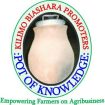Dairy farming is a cornerstone of Kenya’s agricultural sector, playing a crucial role in the country’s economy and food security. The dairy industry not only provides a significant source of nutrition for millions of Kenyans but also supports livelihoods across the country. From smallholder farms to large commercial operations, dairy farming in Kenya is a vibrant and evolving sector with substantial potential for growth and development.
The Significance of Dairy Farming in Kenya
Dairy farming is integral to Kenya’s agricultural landscape, contributing to both the national economy and the nutritional well-being of its population. Milk is a staple part of the Kenyan diet, consumed in various forms such as fresh milk, yogurt, and cheese. Additionally, dairy farming provides income and employment opportunities for thousands of households, particularly in rural areas.
Key Dairy Farming Regions
Kenya’s dairy farming is predominantly concentrated in the highland areas, where climatic and soil conditions are most suitable for dairy cattle. The key dairy-producing regions include:
- Central Kenya: This area, encompassing counties such as Nyeri, Kirinyaga, and Murang’a, is known for its favorable climate and fertile soils, making it ideal for dairy farming.
- Rift Valley: Counties like Uasin Gishu, Bomet, and Kericho are prominent dairy producers, benefiting from good rainfall and suitable grazing conditions.
- Nyanza and Western Kenya: These regions also contribute significantly to dairy production, with various smallholder farms supporting local dairy economies.
Challenges Facing Dairy Farming
Despite its importance, dairy farming in Kenya faces several challenges that impact productivity and sustainability:
- Disease Management: Dairy cattle are susceptible to various diseases such as mastitis, foot-and-mouth disease, and tick-borne fevers. Effective disease management practices and veterinary care are essential for maintaining herd health and productivity.
- Feed and Nutrition: Ensuring a consistent and high-quality feed supply is a major challenge. Many farmers struggle with providing balanced diets for their cattle, which can affect milk production and quality.
- Climate Change: Variations in weather patterns, including droughts and irregular rainfall, impact the availability of feed and water resources, affecting dairy operations.
- Market Access and Price Fluctuations: Farmers often face challenges related to fluctuating milk prices and limited access to markets. Building robust value chains and improving market infrastructure can help stabilize prices and ensure fair returns.
- Infrastructure and Technology: Inadequate infrastructure, such as milk cooling facilities and transportation networks, can hinder the efficiency of the dairy supply chain. Additionally, the adoption of modern technologies is uneven across the sector.
Advancements and Innovations
To address these challenges and enhance dairy farming in Kenya, several advancements and innovations are being introduced:
- Improved Breeds and Genetics: Breeding programs focus on developing high-yielding and disease-resistant dairy breeds. Improved genetics contribute to better milk production and overall herd health.
- Feed and Nutrition Solutions: Innovations in animal feed, including the use of supplements and balanced rations, help improve milk yield and quality. Research into drought-resistant forage crops also supports sustainable feed production.
- Disease Management Programs: Strengthening veterinary services and implementing disease control measures, such as vaccination programs and regular health checks, are crucial for managing animal health.
- Technology Integration: The adoption of technology, such as automatic milking systems, milk testing equipment, and digital record-keeping, enhances efficiency and productivity in dairy farming.
- Cooperative Models: Dairy cooperatives and producer groups play a vital role in aggregating milk, providing technical support, and negotiating better prices for farmers. These cooperatives help improve access to markets and resources.
Government and Policy Support
The Kenyan government has implemented various policies and programs to support the dairy sector. These include:
- Subsidies and Support Programs: Financial support and subsidies for inputs such as animal feed, veterinary care, and infrastructure development help reduce the cost burden on farmers.
- Research and Development: Investments in agricultural research and development focus on improving dairy farming practices, developing better breeds, and addressing sector challenges.
- Market Regulation: Policies aimed at stabilizing milk prices, improving market access, and enhancing quality standards contribute to a more sustainable dairy industry.
Looking to the Future
The future of dairy farming in Kenya is promising, with opportunities for growth and development driven by advancements in technology, research, and supportive policies. By addressing existing challenges and embracing innovative practices, Kenya can enhance its dairy sector, improve productivity, and support the livelihoods of countless farmers.
Sustainable practices, such as improved feed management, disease control, and climate-resilient farming techniques, will be crucial for the long-term success of dairy farming in Kenya. As the sector evolves, collaboration between farmers, government agencies, and the private sector will be key to building a resilient and thriving dairy industry.
In summary, dairy farming in Kenya is a vital sector with significant economic and nutritional importance. Through continued support and innovation, Kenya can cultivate a robust dairy industry that benefits both farmers and consumers, ensuring a steady supply of high-quality dairy products and contributing to national food security.



